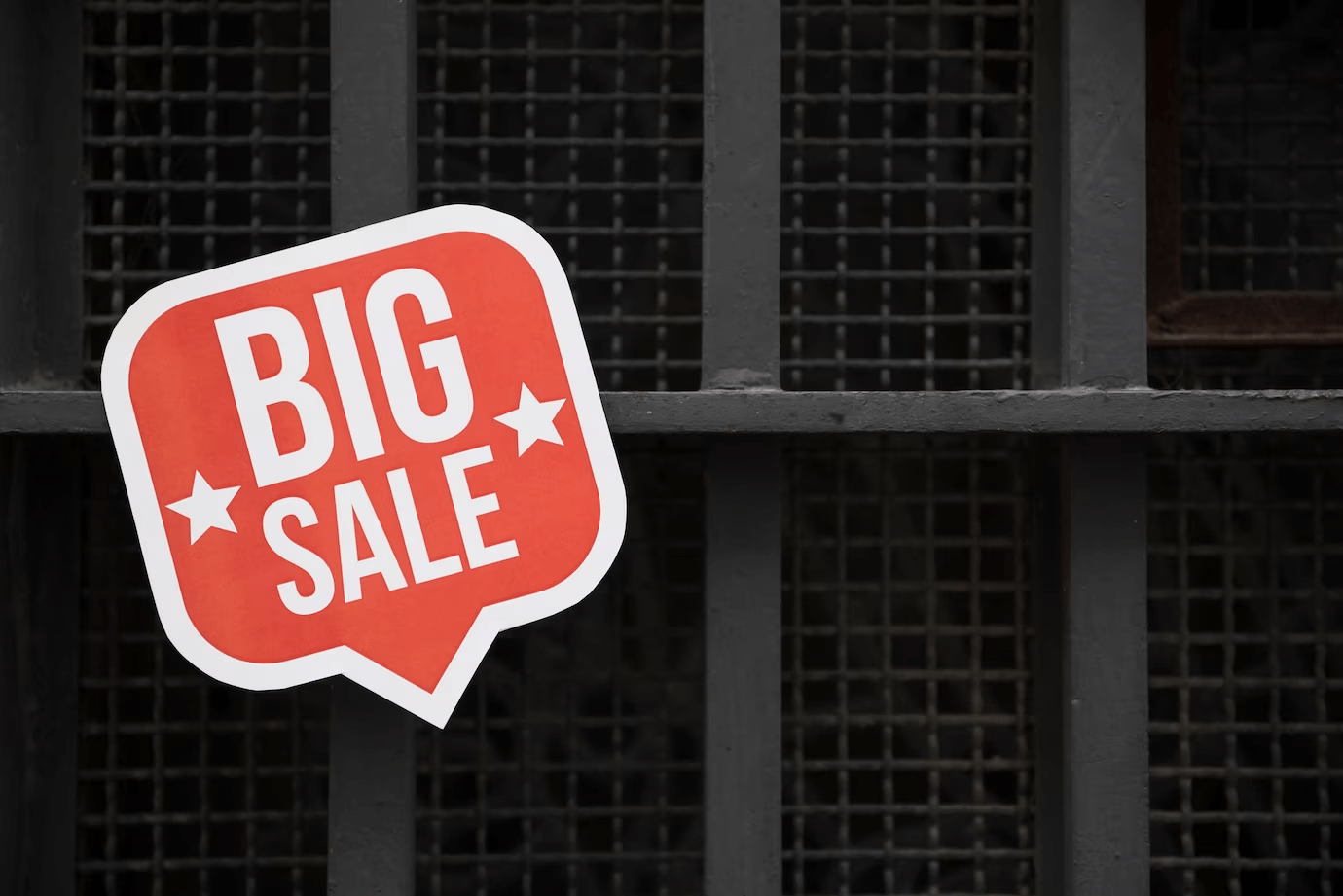MAP vs MSRP Pricing - What They Are & How They Compare

Pricing is one of the most important strategies to keep your eCommerce business profitable. But with so many pricing and cost types out there, which one should you follow?
Two strong contenders to choose from are the manufacturer’s suggested retail price (MSRP) and the minimum advertised price (MAP).
Retailers sometimes use these terms interchangeably, even though they’re quite different.
With so many complicated acronyms in the world of eCommerce pricing, you need to choose the right option to maintain cash flow and ensure your store remains a worthwhile investment.
In this article, we will discuss the differences between MSRP and MAP pricing and the other pricing strategies available for you to choose from.
➡️ What Is the Manufacturer's Suggested Retail Price (MSRP)?
MSRP stands for the manufacturer’s suggested retail price. This is an unofficial number, so you won’t be penalized by your manufacturer if you don’t choose this pricing policy.
It’s only a suggested price by the manufacturer and it’s more of a guideline to help you set a price for your product that is fair to customers, but that will also drive a profit.
 Source: Freepik
Source: Freepik
This is often thought of as a product’s sticker price. You’re free to sell a product above or below MSRP as you see fit.
MSRP isn’t legally binding, but manufacturers provide it to standardize their prices and give you a starting point to work from.
👍 The pros of MSRP
The benefits of using MSRP pricing include:
-
Creating a standardized playing field across different marketplaces.
-
Reinforcing the quality and value of a brand’s products.
-
Building trust with customers, potentially turning them into repeat buyers.
-
Developing the brand protection online retailers need.
👎 The cons of MSRP
There are some pitfalls when it comes to choosing MSRP, including:
-
Limited flexibility in terms of adapting to market changes or responding to competition.
-
Difficulty enforcing this policy.
-
Relying solely on MSRP pricing may not attract customers looking for the best deal.

Source: Freepik
➡️ What Is the Minimum Advertised Price (MAP)?
MAP pricing is a guideline provided by your manufacturer. You may also have the heart of iMAP, which stands for Internet minimum advertised price.
A MAP pricing policy is a dollar amount that the manufacturer sets in your contract with them. This is the lowest price they’ll provide, as a reseller, to advertise the price of a product.
Notice how this is about the advertised price, though.
MAP is only concerned with advertised prices, so if your customer uses a coupon or discount code to bring the price below MAP, this is permissible.
As long as you advertise a product at the price of at or above MAP, you’re allowed to negotiate with shoppers on a lower price privately.

Source: Freepik
If you advertise your products below MAP on your website or online eCommerce platform, your manufacturer can:
-
Ban you from selling their products.
-
Refuse to let you order more stock.
-
Terminate the relationship.
It’s important to ensure that your advertising efforts are aligned with your pricing strategy so you don’t step on your manufacturer’s toes.
|
🤔 Is MAP Pricing Legal? In the U.S., minimum price policies are legal, but there are some variations depending on the state you’re selling in. It’s worth noting that using a MAP price isn’t legal in the EU and U.K. as it infringes on their competition laws. |
👍 The pros of MAP pricing
Here are some of the benefits of a MAP policy. It:
-
Evens out the playing field for retailers of all sizes.
-
Improves your brand and product’s perceived value.
-
Circumvents price wars and allows brands to focus on what’s most important: their customers.
👎 The cons of MAP pricing
There are some downsides to MAP pricing: It
-
Limits price competition for retailers.
-
May lead to price inflation when sellers increase the price of the product to maintain their margin.
-
Can be viewed as price-fixing or anti-competitive policies in some retail spaces.
|
🤔 Understanding MAP Enforcement MAP pricing is essentially an agreement between manufacturers and sellers. This means it’s up to brands to enforce MAP pricing on marketplaces like Amazon. Marketplaces themselves don’t enforce MAP policies—so it’s up to you, as a retailer, to monitor for unauthorized sellers. |
➡️ So, What’s the Key Difference?
At this point, these two pricing policies might sound quite similar. However, there is one key difference between the two.
MSRP is really only a suggested price that retailers can choose to use when and if they wish to follow it.
On the other hand, a brand’s sellers must comply with their MAP policy if they want to remain on the good side of their suppliers.
➡️ Other Pricing Policies to Consider
Aside from MAP and MSRP, there are three other forms of pricing you might want to think about when determining the amount you want to charge your customers.
💰 Unit cost pricing
While your manufacturer recommends the MSRP and MAP, you have control over unit cost pricing.
This is when you price your products based on the amount of money you spend to produce one unit.
|
🤔 How to Calculate Unit Cost Pricing: You can calculate this pricing method by taking the total costs involved in producing the product and dividing it by the total number of units manufactured. |
The issue here is that a lot of dropshippers forget to factor in all of their costs, skewing their true unit cost and profitability. Ensure that your total cost includes:
-
Fixed costs: These are the unchanging costs of running a business, like rent, vehicle payments, taxes, and salaried employees.
-
Labor costs: This is just for hourly or wage workers. Labor costs are variable because hourly employees work based on your production needs.
-
Material costs: Another variable cost. This should account for all the materials purchased to make a production run.
Once you calculate your cost per unit, you need to price the product so that you make a profit.
You want to price the product above your costs or your breakeven point. For example, if it costs you $5 to make a product, you need to price it above $5 to make a profit.
In practice, that means selling the product for $25 to generate a $20 profit per sale or an 80% margin.
Play with your margins using this calculator to determine a profitable price that consumers are likely to find attractive.
.png?width=1347&height=902&name=image5-651eccb5705ee%20(1).png)
💰 Maximum retail price (MRP)
MRP, or maximum retail price, is actually set by the government or industry regulators.
It designates the maximum price you can sell a product for. For example, MRP might dictate that you can’t sell toilet paper to customers for more than $20 a pack.
What’s important to remember is that MRP should include all customer costs, including taxes, transportation, commission, advertising, and packaging.
And since MRP is set by the government, the penalties are pretty steep for violating the guidelines.
MRP keeps goods affordable for customers, so be sure to follow these guidelines carefully to stay on the government’s good side.
💰 JOBBER
JOBBER is the price at which a company will sell its goods to another retail company. As a buyer, you raise the price and sell it for a profit.
Put simply, this is the suggested price you should pay when you buy from a distributor, like the list price. This is just a number, though. The actual price you pay depends on your relationship with the supplier.
JOBBER pricing is very similar to wholesale pricing because your profit margins tend to be very low.
For example, if you frequently buy in bulk, the supplier will probably give you a rate that’s below JOBBER.
If you’re a small operation and buy in small quantities, you’re probably stuck with pricing above JOBBER.
The Botton Line on the Difference Between MAP and MSRP
The different pricing strategies we’ve outlined above can become confusing. You want your pricing and cost models to work together to keep your eCommerce business profitable.
When in doubt, use a solution like Spark Shipping to make your operation less complex and more profitable. Automating the eCommerce process saves you time and money, and prevents costly errors that could deter your customers from purchasing your products altogether.
Popular Posts
Posts by Topic
- Dropshipping (5)
- Dropship Suppliers (3)
- EDI (3)
- Amazon Seller Central (2)
- Conversion Rate Optimization (2)
- Dropshipping Products (2)
- Order Management (2)
- Pricing Strategy (2)
- Vendor Product Catalog (2)
- Dean Soto (1)
- Dropshipping Automation (1)
- Feature Announcement (1)
- Online Empire Academy (1)
- Product Optimization (1)
- Shipping (1)
- referral marketing (1)
.png?width=1403&height=874&name=image3%20(6).png)